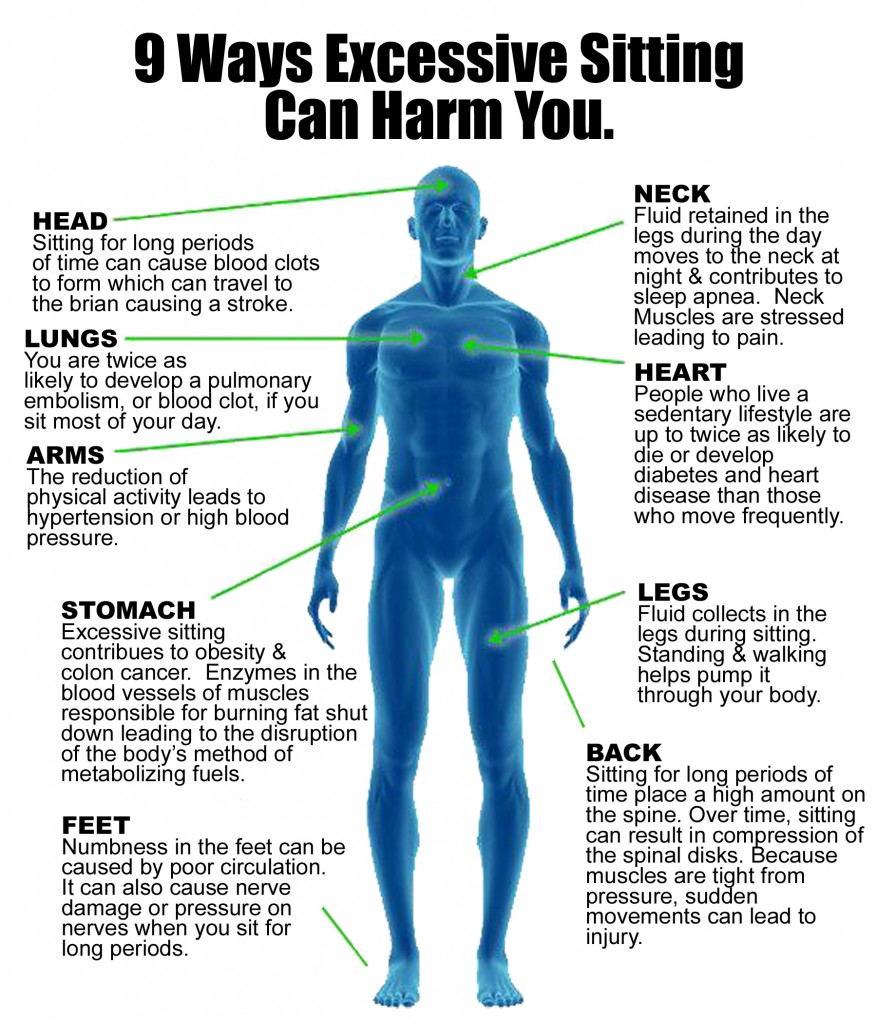 Much of our modern lives revolve around putting our “bums on seats”, and more specifically, being seated for long stretches of time without changing posture. Think about how long you spend sitting when commuting to and from work every day. Think about how many hours you spend sitting in your office chair without moving. Think about how easily the minutes can pass by when you are relaxing on the couch, absorbed in your favourite TV show or a movie. Sitting time can accumulate very quickly and without any effort at all…
Much of our modern lives revolve around putting our “bums on seats”, and more specifically, being seated for long stretches of time without changing posture. Think about how long you spend sitting when commuting to and from work every day. Think about how many hours you spend sitting in your office chair without moving. Think about how easily the minutes can pass by when you are relaxing on the couch, absorbed in your favourite TV show or a movie. Sitting time can accumulate very quickly and without any effort at all…
But here’s the thing: the latest exercise science research suggests that sedentary behaviour is one of the biggest health challenges we face in our technology-driven modern world. Excessive sitting has wide-ranging effects on the human body, and the negative effects are not limited to those who are inactive or are at an unhealthy weight. There is now such a thing as an “active couch potato”: someone who meets physical activity guidelines, but who is also sedentary for long periods throughout their day. Interestingly, even if you are an “active couch potato”, your sedentary behaviour will increase your risk of developing metabolic disorders (e.g., diabetes), even though you are engaging in healthy levels of exercise!
Although this is an emerging research field with many unknowns, a clear message is already apparent:
Spend less time sitting for better health!

So what are some useful strategies you can immediately include in your day-to-day life to make this simple change? Recent studies suggest that we should break up long stretches of sitting time with very short bouts of movement or postural change. It seems that we may only require short but frequent periods of movement, to decrease the likelihood of suffering the negative health consequences of sedentary behaviour.
Here are three easy strategies that you can implement today and every day, to decrease and break up your sitting time, and improve your long-term health outcomes
1. Hold “standing” meetings.
Instead of sitting down around a table, meet with your colleagues while standing up. Double benefit: standing meetings are usually shorter than seated meetings – people get to the point more quickly as the fatigue of standing sets in
2. Stand and stretch every hour.
Stand up from your chair every hour and perform a few simple stretches to compensate for prolonged sitting. You can set a timer, or even use dedicated software (such as those recommended by Lifehacker) to set regular stand-and-stretch reminders for yourself.
3. Take short walking breaks.
One of your colleagues drops by your office in the late afternoon. They’re heading out to grab coffee for your team, and they’re wondering whether you want one too… Maybe you want one, maybe you don’t, but you can still take the opportunity to walk with them too! Other opportunities can arise by moving the office printer further away from your desk, or walking to another person’s office instead of calling them on the phone.
